
 www.frogfish.ch
www.frogfish.ch

|
Eastern
Atlantic If not from the areas above |
Identification Key Frogfishes
Indian Ocean (including the Red Sea)
![]()
All frogfish species listed here are living in the Indian Ocean (including
the Red Sea) and are not striped.
For striped frogfishes living in the Indian
Ocean (including the Red Sea) click here.
For a overwiew of all frogfishes from this area click here.
![]()
Size and frequency
These frogfishes are common in the Indian Ocean and larger than 10cm:
The 3 frogfish species listed below belong to the so called pictus group. They look quite similar and are often confused with each other. Means of identification for frogfishes of the Antennarius pictus group.
Antennarius commerson (Giant frogfish)
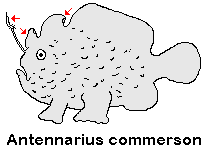 |
Information30cm |
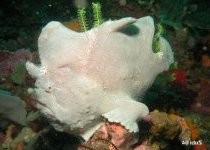 |
|
|
|||
Antennarius maculatus (Warty or Clown frogfish)
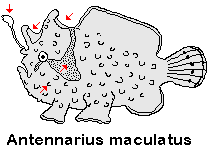 |
Information8-10cm |
 |
|
|
|||
Antennarius pictus (Painted frogfish)
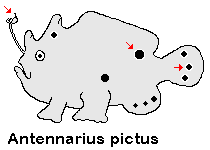 |
Information10-16cm |
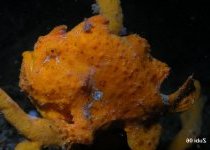 |
|
|
|||
![]()
These frogfishes are common in the Indian Ocean and are smaller than 10cm:
Abantennarius dorehensis, Abantennarius coccineus and Abantennarius nummifer all belong to the genus Abantennarius (formerly Antennatus) and are difficult to distinguish from each other. Here some characteristics that might help with an identification:
Abantennarius dorehensis - the esca on the lure points towards the belly
and is very small.
Abantennarius coccineus - Lacks distinct tail base (dorsal and anal fins
end at base of tail fin)
Abantennarius nummifer - has a large darkly pigmented basidorsal spot. The
lure can have different shapes, but is mostly small and most of the time
round but sometimes with filaments and dark swellings.
Abantennarius coccineus (Freckled frogfish)
 |
Information9-13cm |
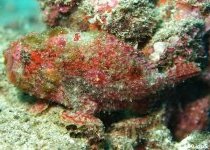 |
|
|
|||
Abantennarius dorehensis (New Guinea Frogfish) - Antennatus dorehensis
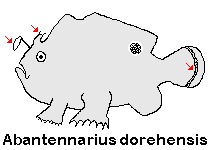 |
Information2.5-5cm |
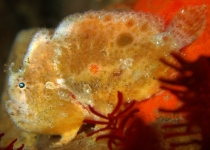 |
|
|
|||
Abantennarius nummifer (Spotfin frogfish)
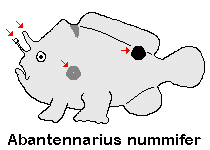 |
Information10cm |
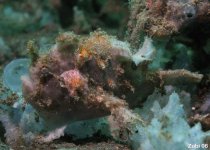 |
|
|
|||
![]()
These frogfishes are uncommon in the Indian Ocean:
Antennatus tuberosus shows honeycomb patterns on its skin, its color is yellow, redish and pink and it has a striped tail.
Antennatus tuberosus (Bandfin frogfish)
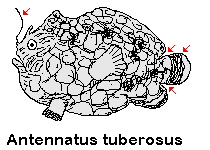 |
Information7cm |
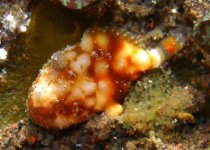 |
|
![]()
This identification key is only for species of the subfamily Antennariinae (frogfishes, family Antennariidae, suborder Antennarioidei) which are frogfishes living in tropical and Subtropical waters.
Please take note, that this is a simplified identification key. Ichthyologists use tables with the number of dorsal, anal and pectoral rays, the length of the illicium and other distinguishing characteristics for means of identification.












